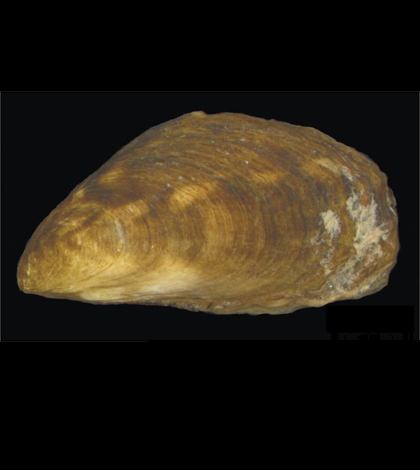Friday Follow-up: Dark false mussels filter Mill Creek to clarity despite sewage spill

Dark false mussel (Credit: Motte123/CC0 1.0)
In May 2014, a 300,000-gallon sewage spill into Maryland’s Mill Creek had scientists and students who watch the water quality there convinced that it would tough going for this Maryland tidal creek.
I talked to Sally Hornor, biology professor at Anne Arundel Community College, about the spill in December. “We really thought this is going to be it for the summer for that creek. It was going to be in truly bad shape,” she told me at the time of the interview. “But it really wasn’t.”
There were some local and short-term effects for nitrate and bacteria, but other than that the creek, a tributary to the Magothy River and Chesapeake Bay, seemed to escape the spill no worse for wear. In fact, one site downstream from the spill where Hornor and her students conducted long-term monitoring showed that water clarity actually improved after the spill. That was probably thanks to the year’s bumper crop of dark false mussels — a species with it’s own story in the watershed that didn’t make it into my original article on the spill.
Dark false mussels are native to the region, but weren’t particularly prominent — or possibly present at all — in the Magothy River system until 2004. It’s thought that following Hurricane Isabel the mussels moved up from Chesapeake Bay into the river and its tributaries, including Mill Creek. The mussels, which look very similar to the dreaded invasive zebra mussel, exploded in population, catching Hornor off-guard.
“I really had this panic — ‘Oh my gosh, are these zebra mussels?'”
After taking a sample to a Smithsonian research center, where a crew pried open the mussels and found a tell-tale “tooth” near the animal’s hinge, Hornor know they were in the clear. Literally.
“People would joke, they would say you could read a newspaper at the bottom of the creek,” Hornor said. The mussels are filter feeders and made a noticeable difference in water clarity after they popped up. The mussels remained in relatively high numbers until 2007, when they all but disappeared except for what Hornor called “maintenance populations.”
But 2014 was a wet year, and the additional rain appears to have driven down salinity levels in Mill Creek and made it more suitable for dark false mussels. Their resurgence appears to have contributed to an increase in water clarity despite a 300,000-gallons sewage spill. Other benefits followed the clarity, including a return of submerged aquatic vegetation.
“We can use this in the future when we talk about trying to restore oysters, say, in this area,” Hornor said. “We can say we know that if we can restore filter feeders to our watersheds, we can really improve water quality.”
Here’s a video from the Magothy River Association about a study of the mussel’s growth and filtering capability in other areas of the system.
[youtube id=”BHOtAd5KhU” width=”620″ height=”360″]





0 comments